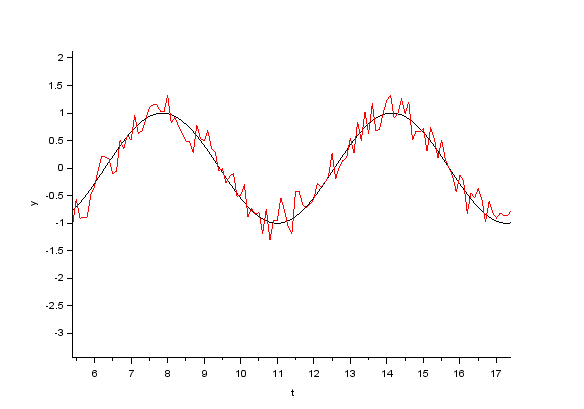In electronics, when working with electrical signals such as sensor measurements or audio signals, it is common practice to use filters. These filters are used to modify these signals with a view to correcting, analyzing or evaluating them correctly. This is known as signal processing.

Definition of electronic signal
A signal is the representation of information passing through a system. An electronic signal is physically limited in precision, speed and range. It can also be modified by external disturbances. For example, a sensor measurement generally contains a disturbance that causes the sensor value to vary around the measured value. This disturbance is called measurement noise and can come from electromagnetic fields and the sensitivity of the sensor. This measurement noise must be neglected or eliminated using a filter to obtain a correct value.

In theory, a signal can have a simple mathematical representation as a sinusoidal function with a fixed frequency and amplitude. In practice, a signal can be described as a superposition of signals with different frequencies and amplitudes. These are the spectral components.
Electronic filter definition
In electronics, a filter is an element that modifies the spectral components of an input signal. There are three main types of filter
- passive analogue filters using passive electronic components (resistors, capacitors, inductors)
- active analogue filters using passive and active electronic components (transistor, operational amplifier, integrated circuit)
With analog signals, such as a sensor measurement or an audio signal, it’s common to find passive or active analog filters. Passive to filter out measurement noise; active to amplify the signal. Once the filter circuit has been installed, the filter function cannot be modified.
- digital filters produced using a processor and a computer programme
Digital filters are managed by computer code, so they are not fixed. They are often used to process and analyze data in order to highlight certain characteristics (colors in an image, dominant frequency in a signal, etc.).
Filter types
We said that a filter modifies the spectral components of a signal. In other words, it amplifies, suppresses or attenuates a signal at a given frequency. Filters can be of different types, depending on their function:
- low-pass: to attenuate high frequencies
- high-pass: to eliminate low frequencies
- band-pass: to pass a frequency range
- notch: to attenuate a frequency range

Filter function
Electronic filters are used in many electronic systems and are often necessary for the system to function properly. A filter allows:
- clean to get a better reading of the signal
- remove a component at an undesirable frequency because it is parasitic or interferes with the system
- correct to obtain a coherent signal
Example of analog filters
Analog filters are often found in audio-visual electronics. Imagine a radio on which you can boost the treble or bass.

Example of digital filters with Arduino
After these definitions, here are some common examples of signal processing with Arduino
This filter is used to remove transition noise from a digital signal, such as the detection of a push-button pressure.
The sliding average algorithm is an easy way of creating a low-pass filter and eliminating noise.




